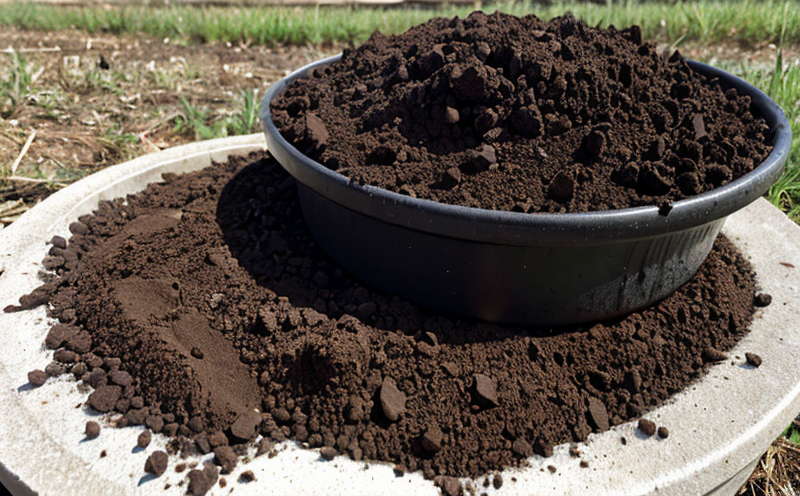ISO 20250 Organic Carbon in Leachate Samples
The ISO 20250 standard is designed to measure the concentration of organic carbon present in leachate samples derived from waste management facilities. This test is crucial for ensuring compliance with environmental regulations, assessing the effectiveness of waste treatment processes, and monitoring the quality of effluent discharge into natural water bodies.
Organic carbon in leachate can indicate the presence of pollutants that may harm aquatic ecosystems if released directly into the environment. By measuring organic carbon concentrations, facilities can take necessary corrective actions to minimize environmental impact. This test is particularly important for waste management and recycling operations dealing with hazardous waste, municipal solid waste, industrial byproducts, and other types of waste streams.
The ISO 20250 procedure involves several steps: sample collection, preparation, digestion, and analysis using various spectroscopic techniques such as infrared or ultraviolet-visible spectrometry. The method ensures accurate quantification of organic carbon content, which is expressed in mg/L (milligrams per liter).
Understanding the significance of this test requires an appreciation of its role within broader waste management frameworks. Compliance with ISO 20250 helps facilities meet regulatory requirements set by environmental agencies and international standards bodies.
The standard also plays a critical role in R&D activities aimed at improving leachate treatment technologies, optimizing waste processing methods, and developing more sustainable recycling practices.
For procurement teams responsible for selecting reliable testing laboratories, ISO 20250 certification signifies expertise in handling complex samples and adherence to stringent quality control protocols. This ensures that the results obtained are accurate and can be trusted by all stakeholders involved in environmental protection initiatives.
Scope and Methodology
| Step | Description |
|---|---|
| Sample Collection | Leachate samples must be collected from designated points in the waste management facility according to standard procedures. |
| Preparation | Samples are filtered and diluted if necessary to ensure they fall within the linear range of the analytical method used for detection. |
| Digestion | The sample is digested using a strong oxidizing agent like potassium dichromate in sulfuric acid, which converts all organic compounds into carbon dioxide. |
| Analysis | An infrared or ultraviolet-visible spectrometer measures the absorbance of the digest solution at specific wavelengths indicative of carbon content. |
The ISO 20250 method allows for a high degree of precision and accuracy, making it suitable for both routine monitoring and research purposes. Proper implementation ensures reliable data that supports informed decision-making processes within waste management operations.
Why Choose This Test
- Precision and Accuracy: The ISO 20250 method guarantees consistent results across different laboratories due to its standardized procedure.
- Regulatory Compliance: Ensures that waste management facilities comply with local, national, and international environmental regulations regarding leachate quality.
- Environmental Protection: Helps in reducing the potential for contamination of nearby water sources by identifying and addressing issues early on.
- Economic Efficiency: By providing actionable insights into treatment efficacy, this test can help minimize operational costs associated with ineffective waste management practices.
- Research Support: Facilitates advancements in waste recycling technologies through continuous quality assessment of processed materials.
Selecting a laboratory that offers ISO 20250 testing ensures compliance with best industry practices and contributes to the overall sustainability goals of your organization. This service is essential for maintaining a clean environment while also supporting economic growth through responsible resource utilization.
Competitive Advantage and Market Impact
Implementing ISO 20250 organic carbon testing within waste management operations can provide several competitive advantages. Firstly, it enhances the reputation of your organization by demonstrating a commitment to sustainable practices aligned with global standards.
Secondly, accurate measurement of organic carbon in leachate allows facilities to identify inefficiencies early on and implement corrective measures promptly. This proactive approach not only improves operational efficiency but also reduces long-term costs associated with environmental remediation efforts.
Thirdly, compliance with this standard can open up new market opportunities for waste management companies seeking to expand their services into regions where stringent environmental regulations are enforced.
Finally, by continuously monitoring the quality of leachate through ISO 20250 tests, organizations contribute positively to public health and safety. This fosters trust among local communities and stakeholders, ultimately leading to increased market share and customer loyalty.





